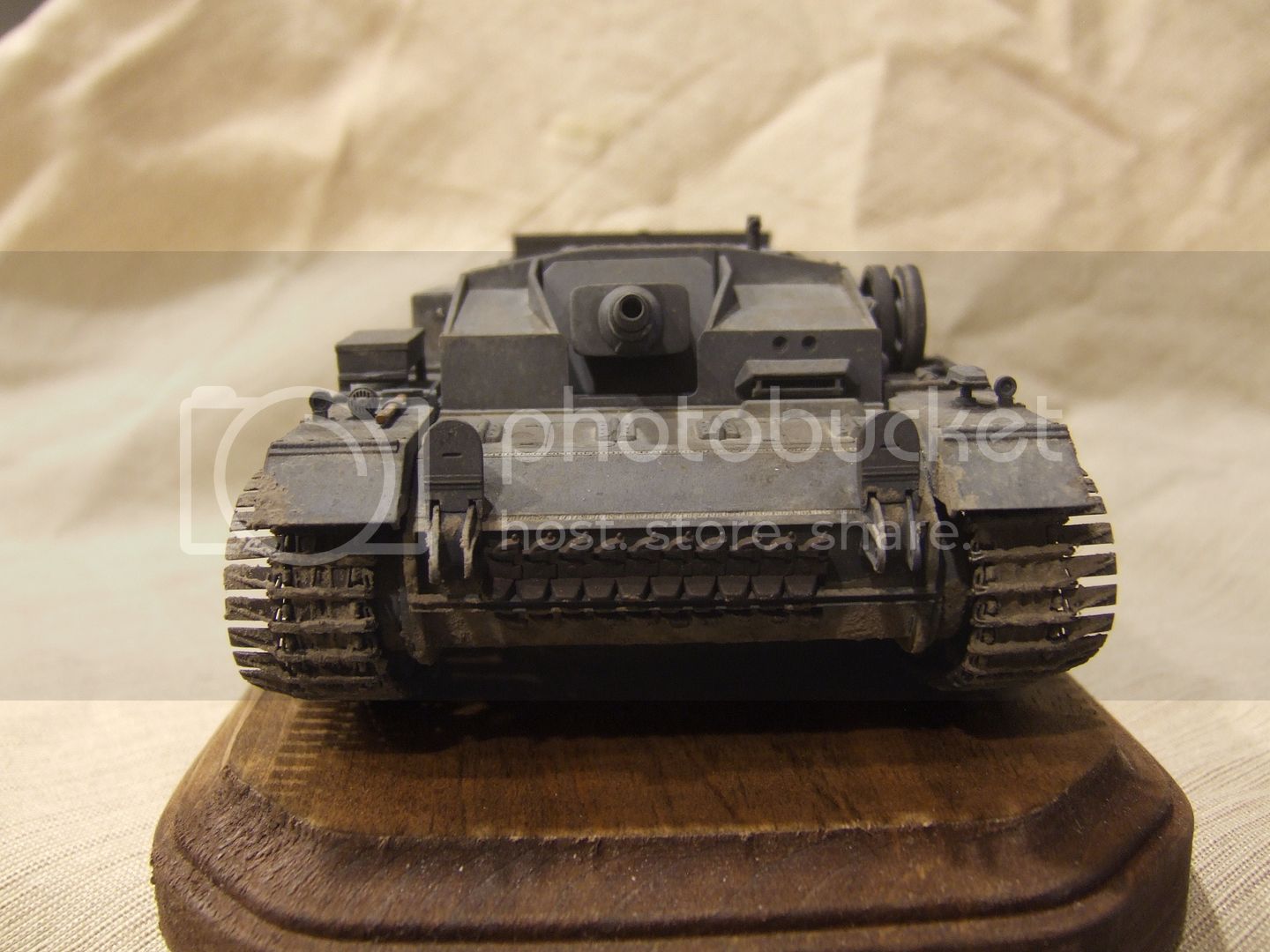Hi Wayne,
wow very nice! Some thoughts/suggestions;
1) You’ve totally nailed the greys/grays, wouldn’t mind more detail on exactly how you built up the tones i.e in what order/dilutions? I could learn something, it’s really excellent.
2) Not so convinced by the mud on the wheels, I don’t think it would cling in thick chunks in some places but not at all in others around the rim. Suggest far more dilute mud & spread it more evenly, with mild variations of course. In the front-on shot (in particular the r/h track) it’s also a bit too caked, the mud would have been mostly shaken off as the links progressed from the rear to the front. Suggest just use the point of a knife to open up the holes where the sprocket teeth engage. But the mud on the hull side walls is perfect.
3) The drive sprocket teeth constantly rubbed against the track plates as they rotated, so even if the vehicle had just gone through a swamp those teeth would be shiny steel again in seconds. Similarly the rims of the rear idlers where they contact the track plates should also be bare steel, and the track guide horns wouldn’t stay muddy for long either.
4) I’m not sure where the fuel ports were, but if they’re visible some dilute-black pools/puddles of spills would be authentic. I usually also drop some oil-stains around the engine hatches where mechanics rested their lube containers. Same for the front transmission access hatches. And signs of dirty boots where the crew climbed in through their hatches.
5) You might want to experiment with pastels – with a few sticks of browns/yellow/black & use a blade to scrape some small piles of fine powder of varying mud shades. Sparingly apply with a small soft brush & experiment. It’s quite liberating to use something that has none of the perils of liquid, it’s easy to brush off if it goes wrong or needs moderating but clings really well – sneezing won’t ruin it. Nothing gives a true dusty look better. It’s best as an augmentation to painted-on mud – rather like your greys/grays were built up in layers (presumably), so should the weathering. Too many kits look like they came out of the factory and fell into one bog.
6) Paint-chipping – I remember 10 or more years ago in Tamiya’s magazine a Panther paint job by Mirko Bayerl pioneering paint-chipping; it was a sheer masterpiece and suddenly everyone did/over-did it and some still do. I’m not a fan, because while it can look very convincing I go back to look at original photos of AFVs and I struggle to identify much chipping at all. However certain edges like on mudguards and other places scraped by passing trees/hedges/bricks/stones/other vehicles etc would have been scratched and/or had the paint taken off (and dented if non- armour-plated), revealing either bare steel or rusting bare steel... but not over every square millimeter of every panel. Yours doesn’t need much of it, but a little would be great.
Anyway congratulations,it’s a beauty & if you’ve seen any of my stuff in the photo-features you’ll know why I support your approach to weathering 100%.
Cheers, Tim



























